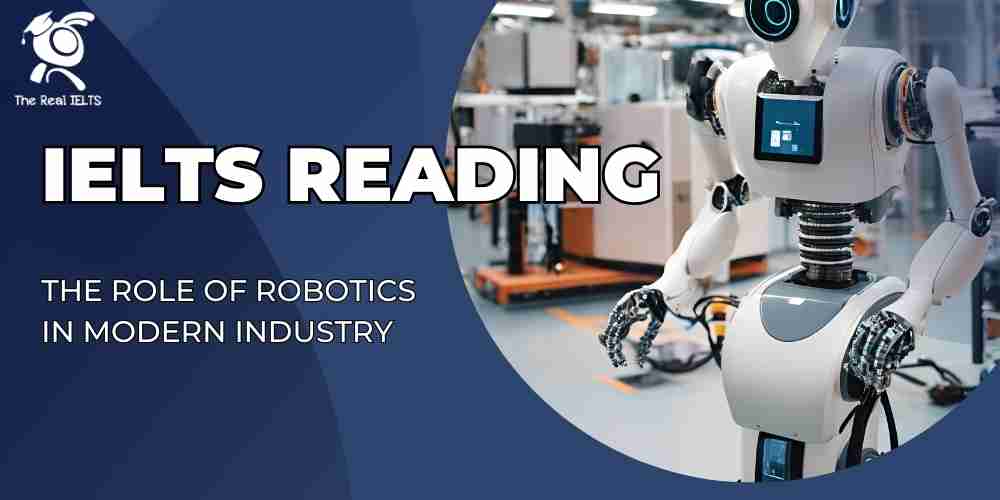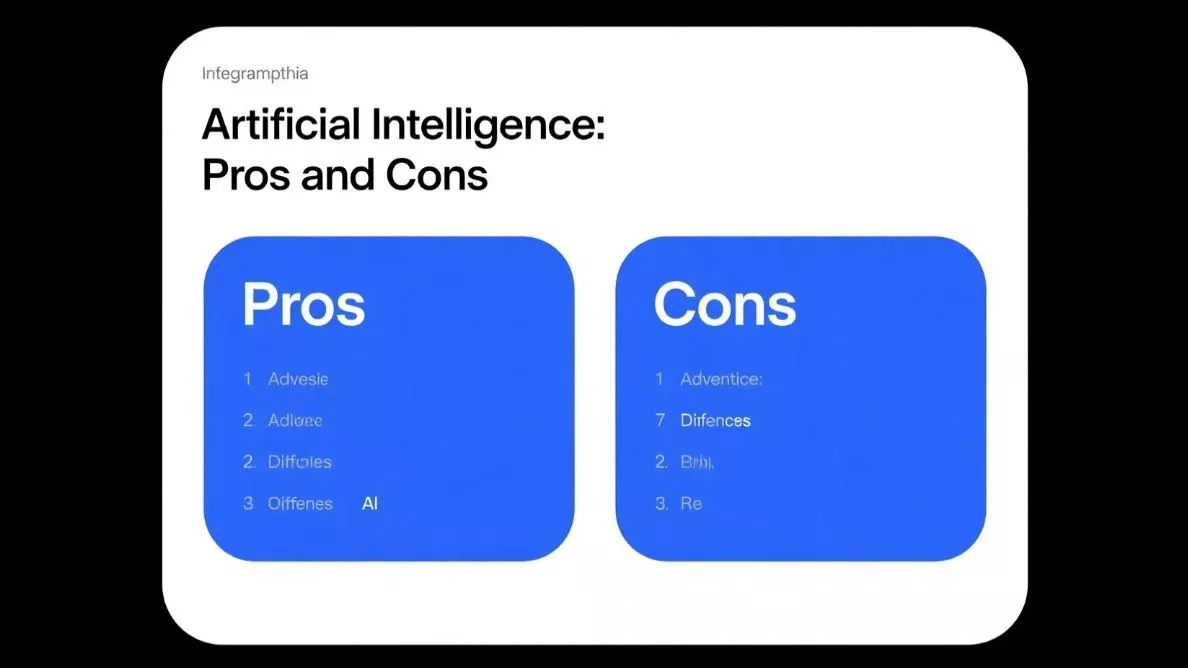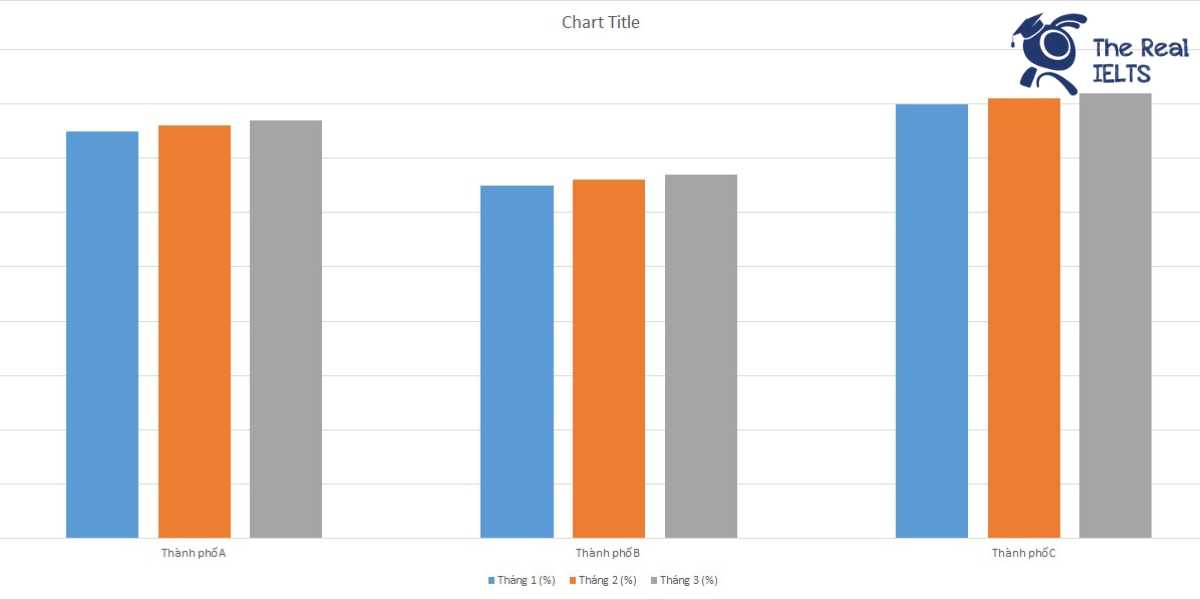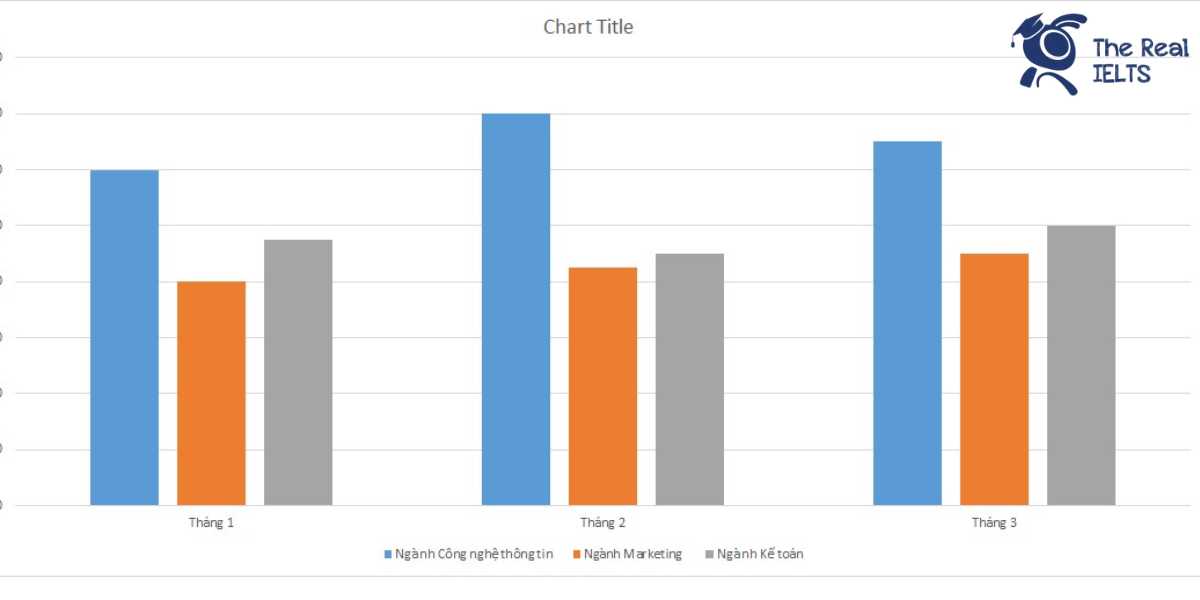Luyện tập IELTS Reading ngày 28 có chủ đề: The Role of Robotics in Modern Industry. Bài này thuộc chuỗi IELTS Reading: 30 chủ đề luyện tập. Mỗi bài này luyện tập khoảng 30 phút.
Học lại bài cũ: IELTS READING Day 27: The Effects of Air Pollution on Public Health.
Đọc bài IELTS Reading và trả lời câu hỏi ở bên dưới
The Role of Robotics in Modern Industry
The integration of robotics in modern industry has transformed the manufacturing process and beyond. Robots, machines designed to perform tasks autonomously or semi-autonomously, have taken over many repetitive and dangerous jobs, significantly improving productivity and safety. The role of robotics extends far beyond simple automation, as they are now involved in complex processes such as precision assembly, quality control, and even predictive maintenance.
Evolution of Robotics in Industry
The history of industrial robotics dates back to the 1960s when the first programmable robot, Unimate, was installed at a General Motors assembly line. These early robots were limited in capability, performing repetitive tasks like welding or handling materials. However, with advancements in artificial intelligence (AI) and machine learning, modern robots have become more sophisticated. They can adapt to changing environments, make decisions, and even collaborate with human workers.
Types of Industrial Robots
Today, there are several types of robots used in modern industry, including articulated robots, Cartesian robots, and collaborative robots (cobots). Articulated robots, with their multi-jointed arms, are widely used in automotive manufacturing for tasks such as welding and painting. Cartesian robots, which move in straight lines along X, Y, and Z axes, are often used for precision tasks like pick-and-place operations in electronics manufacturing. Collaborative robots, or cobots, work alongside human employees, enhancing efficiency and flexibility in environments that require human-robot interaction.
Benefits of Robotics in Industry
The benefits of integrating robotics into industrial processes are numerous. One of the most significant advantages is increased productivity. Robots can work around the clock without fatigue, allowing factories to operate continuously. They also enhance precision, as robots can consistently perform tasks with high accuracy, reducing errors and waste.
In addition to boosting productivity, robots have improved workplace safety. By handling dangerous tasks such as heavy lifting, toxic substance management, and operations in hazardous environments, robots protect human workers from injury. Furthermore, predictive maintenance powered by AI-enabled robots has reduced downtime in manufacturing plants. These robots monitor machinery performance and predict when maintenance is needed, preventing costly breakdowns.
Challenges in Robotic Integration
Despite their benefits, the integration of robotics in industry is not without challenges. One of the primary concerns is the displacement of human workers. As robots take over more tasks, particularly in manufacturing and logistics, there is growing concern about job losses. While robots may create new opportunities in fields such as robotics maintenance and programming, these jobs often require specialized skills that displaced workers may not possess.
Another challenge is the high initial investment required to implement robotic systems. For small and medium-sized enterprises (SMEs), the cost of purchasing and maintaining robots can be prohibitive. However, the long-term benefits, including increased efficiency and reduced labor costs, often outweigh the initial investment.
The Future of Robotics in Industry
Looking ahead, the role of robotics in industry is expected to expand even further. With advancements in AI, robots will become more intelligent, capable of performing highly complex tasks that were once the exclusive domain of humans. In sectors like healthcare, agriculture, and logistics, robots are already being used for tasks ranging from surgery to crop harvesting and warehouse automation.
In the future, robots may play a key role in sustainable manufacturing, helping industries reduce waste, optimize resource use, and minimize their environmental impact. As robotics technology continues to evolve, the line between human and machine roles in the workplace will blur, leading to more integrated and collaborative work environments.
Từ vựng
- Robotics – Ngành robot học
- Autonomously – Tự động
- Semi-autonomously – Bán tự động
- Productivity – Năng suất
- Precision – Độ chính xác
- Predictive maintenance – Bảo trì dự đoán
- Evolution – Sự phát triển, tiến hóa
- Programmable – Có thể lập trình
- Assembly line – Dây chuyền lắp ráp
- Artificial intelligence (AI) – Trí tuệ nhân tạo
- Machine learning – Học máy
- Sophisticated – Phức tạp, tinh vi
- Articulated robots – Robot khớp nối
- Cartesian robots – Robot hình chữ nhật
- Collaborative robots (cobots) – Robot hợp tác
- Pick-and-place operations – Hoạt động nhặt và đặt
- Accuracy – Độ chính xác
- Workplace safety – An toàn nơi làm việc
- Hazardous environments – Môi trường nguy hiểm
- Downtime – Thời gian ngừng hoạt động
- Implementation – Sự triển khai
- Initial investment – Khoản đầu tư ban đầu
- Displacement – Sự thay thế
- Logistics – Hậu cần
- Sectors – Các lĩnh vực
- Sustainable manufacturing – Sản xuất bền vững
- Optimize – Tối ưu hóa
- Environmental impact – Tác động môi trường
- Integrated – Tích hợp
- Collaborative work environments – Môi trường làm việc hợp tác
Câu hỏi IELTS Reading
Questions 1-5: True, False, or Not Given
Do the following statements agree with the information given in the passage? Write:
- True if the statement agrees with the information.
- False if the statement contradicts the information.
- Not Given if there is no information on this.
- The first industrial robot was installed in an automobile manufacturing plant.
- Collaborative robots are only used in electronics manufacturing.
- Robots can perform tasks more accurately than human workers.
- Small businesses have fully embraced robotics due to low implementation costs.
- Robots are expected to become less intelligent in the future.
Questions 6-10: Matching Information
Match each description below with the correct type of robot mentioned in the passage (A-C).
- A. Articulated Robots
- B. Cartesian Robots
- C. Collaborative Robots (Cobots)
- Used primarily for tasks like welding and painting in car manufacturing.
- Capable of working alongside humans in shared workspaces.
- Moves in straight lines along three axes for precision tasks.
- Often employed in the electronics industry for assembly tasks.
- Designed to enhance workplace safety by collaborating with humans.
Questions 11-13: Multiple Choice
Choose the correct answer (A, B, C, or D).
- What is one of the primary concerns about the increased use of robots in industry?
- A. Decreased productivity
- B. Displacement of human workers
- C. Lack of precision in tasks
- D. Increased downtime in factories
- According to the passage, predictive maintenance helps to:
- A. Reduce errors in assembly lines
- B. Prevent accidents involving robots
- C. Minimize factory downtime
- D. Enhance collaboration between robots and humans
- What is one predicted future role of robots in industry?
- A. Eliminating the need for human workers entirely
- B. Increasing waste in manufacturing processes
- C. Helping industries become more sustainable
- D. Replacing humans in all sectors
Đáp án IELTS Reading
Questions 1-5: True, False, or Not Given
- True – The passage states that the first industrial robot, Unimate, was installed in a General Motors assembly line (an automobile manufacturing plant).
- False – Collaborative robots (cobots) are used in various industries, not just electronics manufacturing. They are mentioned as enhancing efficiency and flexibility in environments requiring human-robot interaction.
- True – The passage mentions that robots enhance precision and can consistently perform tasks with high accuracy, reducing errors.
- False – The passage mentions that small and medium-sized enterprises (SMEs) face challenges in adopting robots due to high initial costs.
- False – The passage predicts that robots will become more intelligent in the future, not less.
Questions 6-10: Matching Information
- A. Articulated Robots – Used for tasks like welding and painting in car manufacturing.
- C. Collaborative Robots (Cobots) – Capable of working alongside humans in shared workspaces.
- B. Cartesian Robots – Moves in straight lines along three axes for precision tasks.
- B. Cartesian Robots – Often employed in the electronics industry for assembly tasks.
- C. Collaborative Robots (Cobots) – Designed to enhance workplace safety by collaborating with humans.
Questions 11-13: Multiple Choice
- B. Displacement of human workers – One primary concern mentioned in the passage is that robots are taking over more tasks, raising fears of job losses.
- C. Minimize factory downtime – Predictive maintenance powered by AI-enabled robots helps to prevent breakdowns, reducing downtime.
- C. Helping industries become more sustainable – The passage suggests that robots may play a role in helping industries reduce waste and optimize resource use for sustainability.















